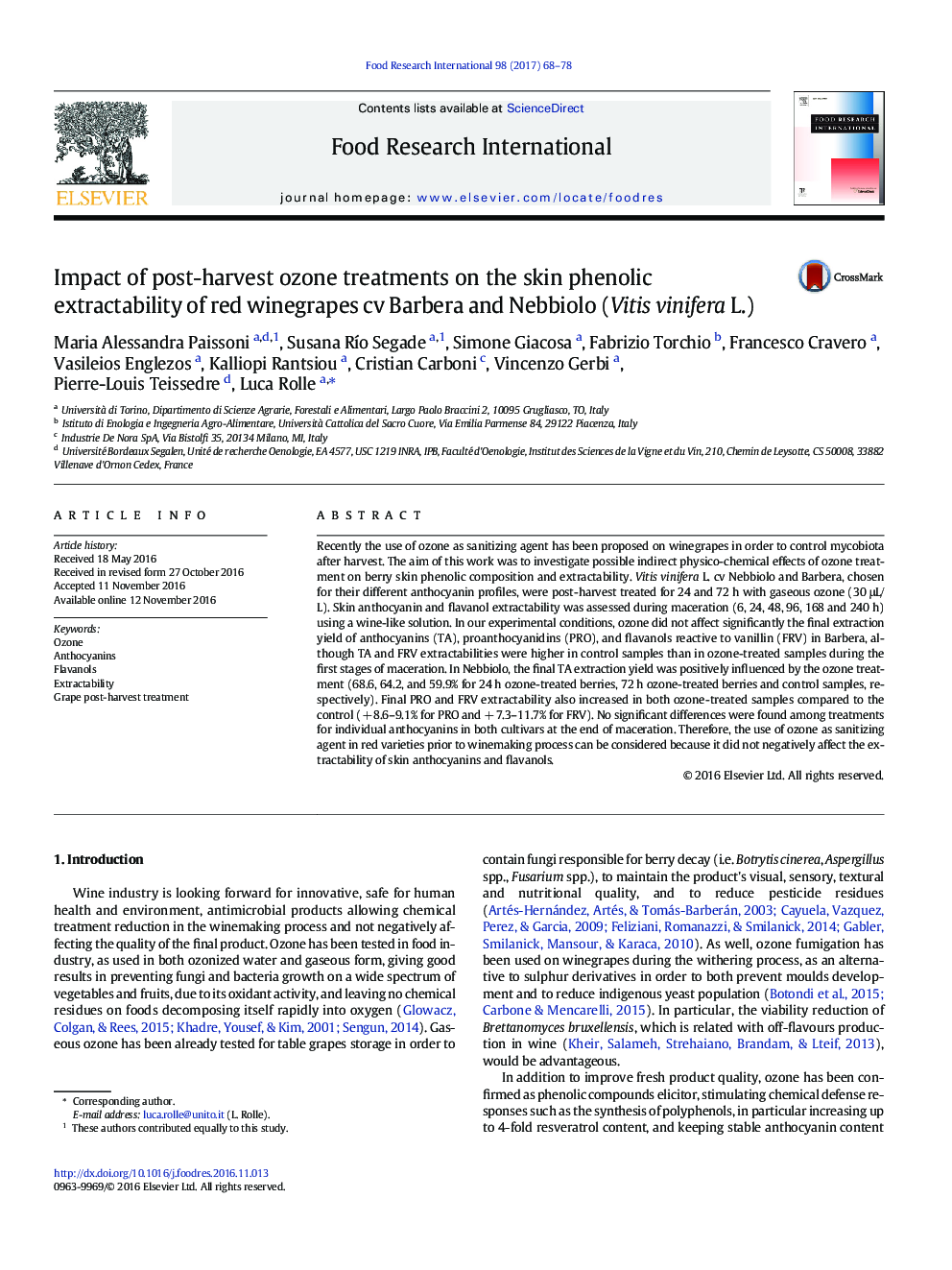| کد مقاله | کد نشریه | سال انتشار | مقاله انگلیسی | نسخه تمام متن |
|---|---|---|---|---|
| 5768174 | 1628452 | 2017 | 11 صفحه PDF | دانلود رایگان |

- Phenols extraction in post-harvest ozone treated red winegrapes is variety-dependent.
- Ozone did not affect the final extraction yield of phenolic compounds in Barbera.
- Anthocyanin and flavanol extractability increased in ozone treated Nebbiolo grapes.
- Extracted anthocyanin profile was not affected by ozone treatment in both varieties.
Recently the use of ozone as sanitizing agent has been proposed on winegrapes in order to control mycobiota after harvest. The aim of this work was to investigate possible indirect physico-chemical effects of ozone treatment on berry skin phenolic composition and extractability. Vitis vinifera L. cv Nebbiolo and Barbera, chosen for their different anthocyanin profiles, were post-harvest treated for 24 and 72 h with gaseous ozone (30 μL/L). Skin anthocyanin and flavanol extractability was assessed during maceration (6, 24, 48, 96, 168 and 240 h) using a wine-like solution. In our experimental conditions, ozone did not affect significantly the final extraction yield of anthocyanins (TA), proanthocyanidins (PRO), and flavanols reactive to vanillin (FRV) in Barbera, although TA and FRV extractabilities were higher in control samples than in ozone-treated samples during the first stages of maceration. In Nebbiolo, the final TA extraction yield was positively influenced by the ozone treatment (68.6, 64.2, and 59.9% for 24 h ozone-treated berries, 72 h ozone-treated berries and control samples, respectively). Final PRO and FRV extractability also increased in both ozone-treated samples compared to the control (+ 8.6-9.1% for PRO and + 7.3-11.7% for FRV). No significant differences were found among treatments for individual anthocyanins in both cultivars at the end of maceration. Therefore, the use of ozone as sanitizing agent in red varieties prior to winemaking process can be considered because it did not negatively affect the extractability of skin anthocyanins and flavanols.
229
Journal: Food Research International - Volume 98, August 2017, Pages 68-78